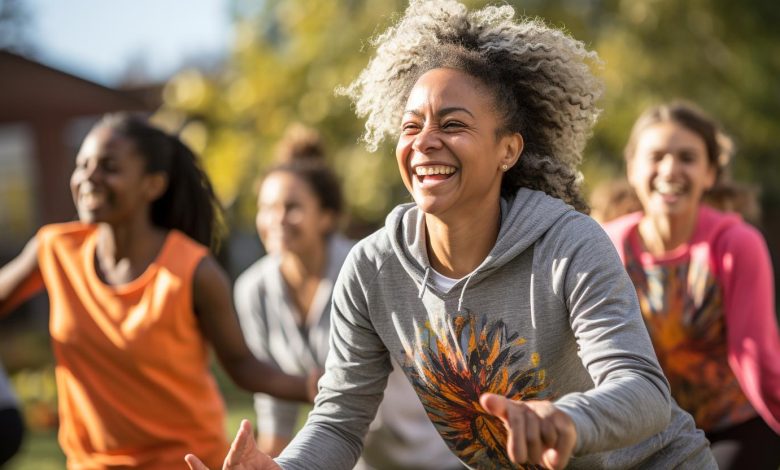Injury Prevention for Different Age Groups: Adjusting Training to Reduce Risks

Do you want to stay active and injury-free at any age? Look no further! In this article, we will delve into the world of injury prevention and show you how to adjust your training methods according to your age group.
Whether you’re a youth athlete, an adult fitness enthusiast, or an older adult looking to maintain mobility, we’ve got you covered. Get ready to discover evidence-based strategies that will keep you in top form and reduce the risks of injuries.
Let’s dive in!
Benefits of Age-Appropriate Training

Age-appropriate training can help reduce the risk of injuries in different age groups. It is important to tailor training programs to the specific needs and capabilities of individuals at different stages of development. The benefits of age-appropriate training are numerous and have been supported by research.
One major benefit is the reduced risk of overuse injuries. Young athletes who engage in activities that are too intense or repetitive for their age may experience stress on their growing bodies, leading to overuse injuries such as stress fractures or tendonitis. By implementing age-appropriate training methods, coaches and trainers can ensure that young athletes gradually build up strength, endurance, and skill without placing excessive strain on their developing musculoskeletal systems.
Age-appropriate training also enhances effectiveness by optimizing skill acquisition. Children learn differently than adults, with shorter attention spans but greater capacity for motor skill development. Training programs designed specifically for each age group take into account these cognitive and physiological factors, maximizing learning potential. For example, preschool-aged children benefit from play-based activities that focus on fundamental movement skills like running, jumping, and throwing.
Common Injuries Among Different Age Groups

When you’re at a certain stage in life, you’ll likely encounter specific types of injuries. Understanding the common injuries among different age groups can help in preventing sports injuries through targeted and age-specific exercises.
In younger athletes, growth plate injuries are more prevalent due to their developing bones and joints. These injuries occur when too much stress is placed on the growth plates, leading to pain, swelling, and potential long-term complications. To prevent these injuries, it’s important for young athletes to focus on strength training exercises that promote proper muscle balance and joint stability.
As individuals reach adulthood, overuse injuries become more common. These include conditions like tendinitis or stress fractures that result from repetitive movements or excessive strain on specific areas of the body. Incorporating cross-training activities into your exercise routine can help reduce the risk of these types of injuries by allowing your body to rest and recover while still maintaining overall fitness.
Transitioning into older adulthood brings about a higher risk of joint-related issues such as arthritis or tendon degeneration. Engaging in low-impact exercises like swimming or cycling can help protect joints while still providing the necessary cardiovascular benefits.
Understanding these age-specific injury patterns is crucial for tailoring training methods for youth athletes. By addressing potential risks early on and implementing appropriate exercise programs, we can significantly reduce the incidence of sports-related injuries among different age groups.
Tailoring Training Methods for Youth Athletes

To help youth athletes maximize their potential, it’s important to customize training methods based on their specific needs and abilities.
Youth athlete development is a crucial stage where proper training can lay the foundation for future success while also minimizing the risk of injuries.
Here are some key injury prevention techniques that should be incorporated into the training programs of young athletes:
– Proper warm-up and cool-down routines: By including dynamic stretches and mobility exercises before a workout, and static stretches after, you can improve flexibility and reduce muscle tightness.
– Age-appropriate strength training: Focusing on bodyweight exercises, resistance bands, or light weights can help develop muscular strength without putting too much stress on growing bones and joints.
– Skill-specific drills: Incorporating sport-specific drills into training sessions helps young athletes develop the necessary skills while reducing the risk of overuse injuries.
By tailoring training methods to meet the unique needs of youth athletes, coaches and trainers can enhance their performance while safeguarding them against potential injuries.
Adjusting Training Intensity for Adult Fitness Enthusiasts

Adjusting the intensity of workouts for adult fitness enthusiasts can help maximize progress and minimize the risk of injuries. As an adult, your body has different needs and capabilities compared to when you were younger. By making training modifications and tailoring personalized workouts, you can optimize your fitness journey.
One important aspect to consider is your current fitness level. If you’re just starting out or returning after a long break, it’s crucial to gradually increase the intensity of your workouts. This allows your muscles, joints, and cardiovascular system to adapt and prevent potential strains or overuse injuries.
Additionally, pay attention to any pre-existing conditions or limitations you may have. Incorporating exercises that target specific muscle imbalances or weaknesses can help improve overall strength and stability while reducing the risk of injury.
Furthermore, listen to your body during workouts. Pushing yourself is important for progress, but knowing when to take a step back is equally essential. Injuries can occur when we ignore warning signs such as pain or fatigue. Be mindful of proper form and technique as well.
By adjusting the intensity of your workouts based on your individual needs and goals, you can ensure a safer and more effective fitness routine.
Now let’s explore injury prevention strategies for older adults in the next section.
Injury Prevention Strategies for Older Adults

One important aspect for older adults is the importance of gradually increasing workout intensity to prevent potential strains or overuse injuries. As we age, our bodies become more susceptible to injuries, and it is crucial to take precautions when engaging in physical activity.
Here are some key strategies to prevent injuries and ensure a safe exercise routine:
– Senior friendly exercises: Opt for low-impact activities that put less stress on joints and muscles, such as swimming, cycling, or walking. These exercises help maintain cardiovascular health without putting excessive strain on the body.
– Balance training for elderly: Enhancing balance is essential for older adults as it helps reduce the risk of falls and related injuries. Incorporate exercises like standing on one leg, heel-to-toe walk, or Tai Chi into your workout routine.
– Gradual progression: Start with light-intensity workouts and gradually increase the duration and intensity over time. This allows your body to adapt and reduces the chances of straining muscles or joints.
Conclusion
In conclusion, it is crucial to adjust training methods for different age groups in order to reduce the risk of injuries. By tailoring training to the specific needs and capabilities of youth athletes, we can help them develop their skills while minimizing the chances of getting hurt.
Similarly, adjusting training intensity for adult fitness enthusiasts allows them to challenge themselves without putting excessive strain on their bodies.
Lastly, implementing injury prevention strategies for older adults can help maintain their mobility and independence. Remember, ‘an ounce of prevention is worth a pound of cure.’ So let’s prioritize injury prevention and keep everyone active and healthy at every stage of life.






